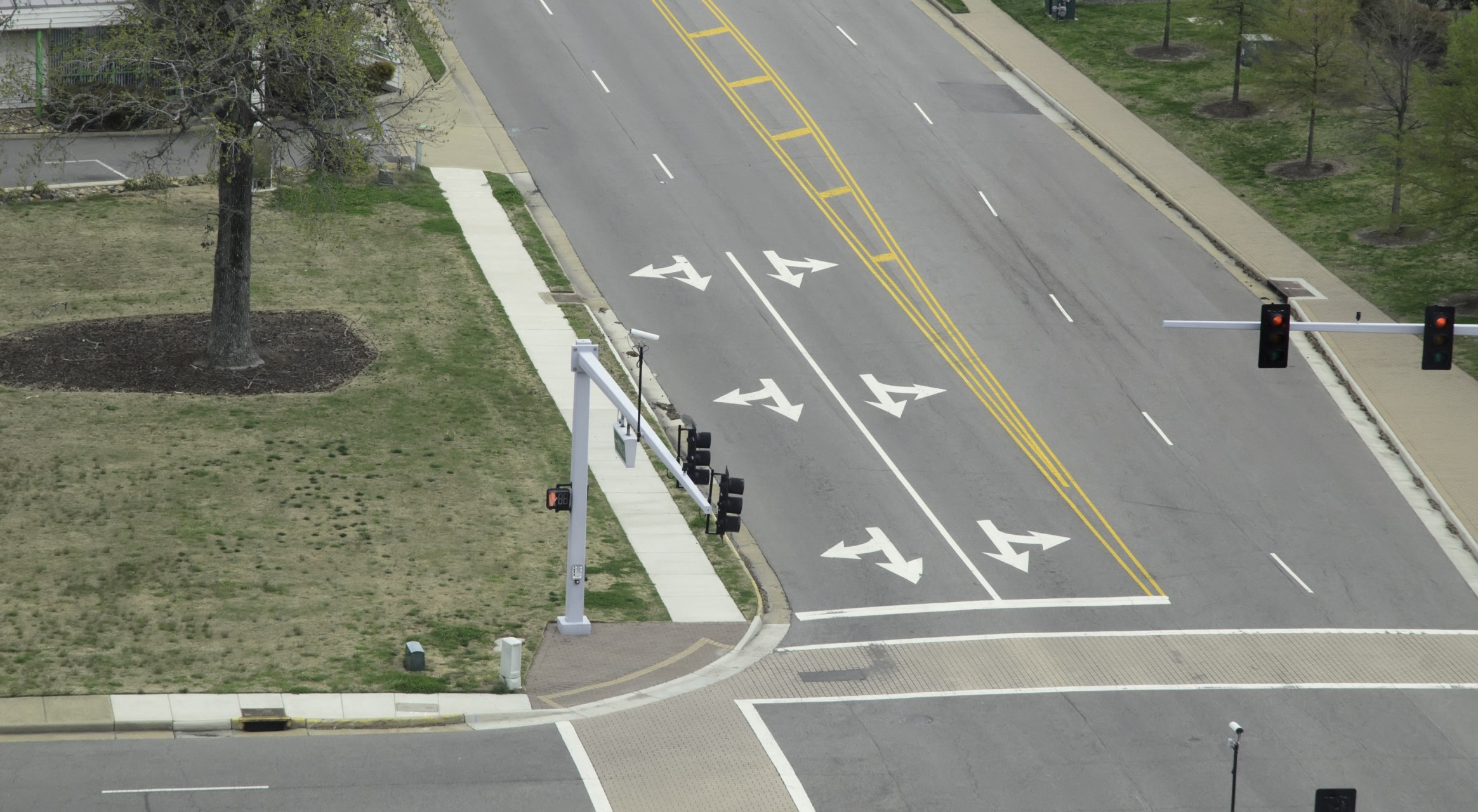Chris Simons, Kansas City Traffic Lawyer, Named Top Contributor by Avvo
Kansas City Traffic Law: Visual and Pacing Methods to Measure Speed

Kansas City speed enforcement is not always based on radar or laser. Officers will also use visual and pacing methods to estimate the speed of an automobile. Those methods are acknowledged under Kansas City traffic law and still utilized on Missouri roads and city streets.
At Speeding Ticket KC, we teach drivers how these techniques work, when they’re used, and how they can be beaten in court when errors occur.
Visual Estimation: How Officers Estimate Speed with Their Eyes
Visual estimation is one of the oldest methods of speed detection used by the police in Kansas City. It relies on a police officer’s training, experience, and observational skills.
Police officers learn to estimate a vehicle’s speed by measuring its progress relative to points of reference like road signs, lane lines, and other cars. They practice using visual estimates against radar results until they can consistently estimate speed within 3 to 5 miles per hour of accuracy.
Following training and certification, an officer’s visual estimate can be legally applied as the basis for issuing a speeding ticket—without radar or laser assistance.
Regardless, accuracy is highly reliant on factors such as lighting conditions, distance, and angle. At Speeding Ticket KC, we typically go over such factors when deciding whether to accept a visual-based speeding ticket.
Pacing Method: Measuring Speed with a Patrol Car
The pacing method is an accepted technique Kansas City police officers employ to measure speed. It is accomplished by the officer keeping a consistent distance behind a suspected vehicle and then comparing its speed utilizing the patrol car’s speedometer.
The process generally involves:
Following the car for a known distance.
- Keep the same distance between the two vehicles.
- Reading and recording the speedometer reading of the patrol car.
- The so-obtained figure is the measured speed of the leader.
This method makes no use of radar or visual estimate tools but depends on the accuracy of the patrol car’s speedometer and the officer’s pacing consistency.
If the officer’s patrol vehicle is not calibrated or the pace was not consistent, the result can be questionable, and Speeding Ticket KC is where to turn.
Kansas City Traffic Law and Legal Acceptance
Visual estimation and pacing methods are both legally accepted speed-measuring methods by Kansas City and Missouri traffic laws. As long as the officer possesses:
- Legitimate training certification in pacing or visual methods; these readings are accepted by the courts.
- An adequate record of the event.
- A well-maintained patrol vehicle that has been certified with a functioning speedometer.
The officer will also be required to record the distance paced and conditions at the time of the stop.
In the absence of these facts, Speeding Ticket KC will object to the evidence. The majority of speeding tickets are dismissed because the officer failed to adequately perform the procedure or was unable to confirm vehicle calibration.
Accuracy Variables Affecting Visual and Pacing Methods
Both methods, legal as they are, are subject to mechanical or human error. Traffic and environmental conditions generally affect the accuracy of visual or pacing-derived speed readings.
Common issues are:
- Hills and curves that restrict depth perception.
- Deteriorated light, which hinders movement estimation.
- Heavy traffic where car spacing changes often.
- Defective speedometer readings in patrol cars.
- Short pacing distances are not representative samples.
All of these can question the accuracy of the officer’s estimate.
Speeding Ticket KC often scrutinizes dashcam videos, police calibration data, and officer statements to establish discrepancies in these cases.
How Speeding Ticket KC Disputes Visual and Pacing Evidence
Disputing a speeding ticket based on visual or pacing evidence demands careful legal scrutiny. The experts at Speeding Ticket KC scrutinize each aspect that would affect precision.
We start by reviewing:
- Officer’s visual or pacing certification.
- Patrol car speedometer calibration record.
- Distance recorded and circumstances of observation.
- Dashcam or bodycam video (if applicable).
If the evidence is unacceptable under Kansas City law, we can demonstrate that the officer’s measurement was not reliable. In most cases, this will lead to a decrease or dismissal of a ticket.
Speeding Ticket KC has helped numerous drivers avoid fines, license points, and insurance hikes caused by suspicious speed readings.
Advantages of Non-Radar Means for Police
Kansas City police officers still utilize visual and pacing techniques because they’re easy, consistent, and rapid. They aren’t technology-dependent, so they can be relied upon when radar machines fail or weather conditions interfere with detection.
Visual and pacing techniques also provide officers with a second method for ensuring radar accuracy, which gives them another means of being certain of a driver’s speed.
But these same attributes also introduce potential for error—and that means that drivers need to be aware of their rights.
How Drivers Can Protect Themselves
If you’re pulled over for speeding in Kansas City and the officer didn’t use radar, ask how your speed was determined. If they say it was based on pacing or visual observation, write down the conditions:
- The location and time of day.
- Traffic and lighting conditions.
- Whether the officer was moving or stationary.
This data enables Speeding Ticket KC to review your case in the future. Even minor details can become significant in court.
Kansas City Officer Training Requirements
Through visual or pacing techniques, officers must receive certified training sessions per Missouri traffic enforcement policies. They learn how to accurately estimate speed under different conditions and how to document results appropriately.
Training produces similar results, but in real driving conditions, rain, glare, or multiple vehicles can take away from accuracy.
If Speeding Ticket KC finds gaps in the training of the officer or paperwork, that can be utilized to fight the ticket.
How Courts View Pacing and Visual Speeding Tickets
Kansas City courts typically place value on an officer’s affidavit supported by adequate records. Judges do, however, look for proof of precision as well—e.g., calibration records or standard observation distances.
When the proof is questionable, the driver is usually the one who gets the benefit of the doubt. That is where having a good legal team like Speeding Ticket KC can become handy.
We know what records to look for, what questions to ask, and what procedure errors to look for.
Why Use Speeding Ticket KC
Speeding Ticket KC is a speeding ticket defense firm serving Kansas City and the surrounding areas. If your ticket was radar, pacing, or a visual estimate-based, we can help.
Here is what we do:
- Scan all equipment and officer records.
- Find observation or calibration errors.
- Negotiate lower charges or dismissals.
We believe that every driver deserves a fair review of the facts—not just a quick fine.
If you received a ticket for speeding under the Kansas City traffic code, Speeding Ticket KC can help. Our skilled and affordable Kansas City traffic lawyers know how officers in the area operate, which mistakes are common, and how to build a case that will win in court.
Frequently Asked Questions (FAQs)
1. What is Kansas City’s visual estimation method for speeding?
It’s when officers estimate speed from viewing car movement based on training and experience.
2. How does pacing estimate vehicle speed?
Officers pace your vehicle at a constant distance, equating speed with their patrol vehicle’s speedometer.
3. Are visual and pacing methods legal in Kansas City traffic court?
Yes. Both are permissible by Kansas City traffic law if the officer is competent and following proper procedure.
4. Does Speeding Ticket KC defend against a pacing-based speeding ticket?
Yes. We review for pacing errors, substandard documentation, or minimal pacing distances, which reduce accuracy.
5. What if the officer’s speedometer wasn’t calibrated?
The ticket would be dismissed because the pacing evidence is not reliable under Kansas City law.

